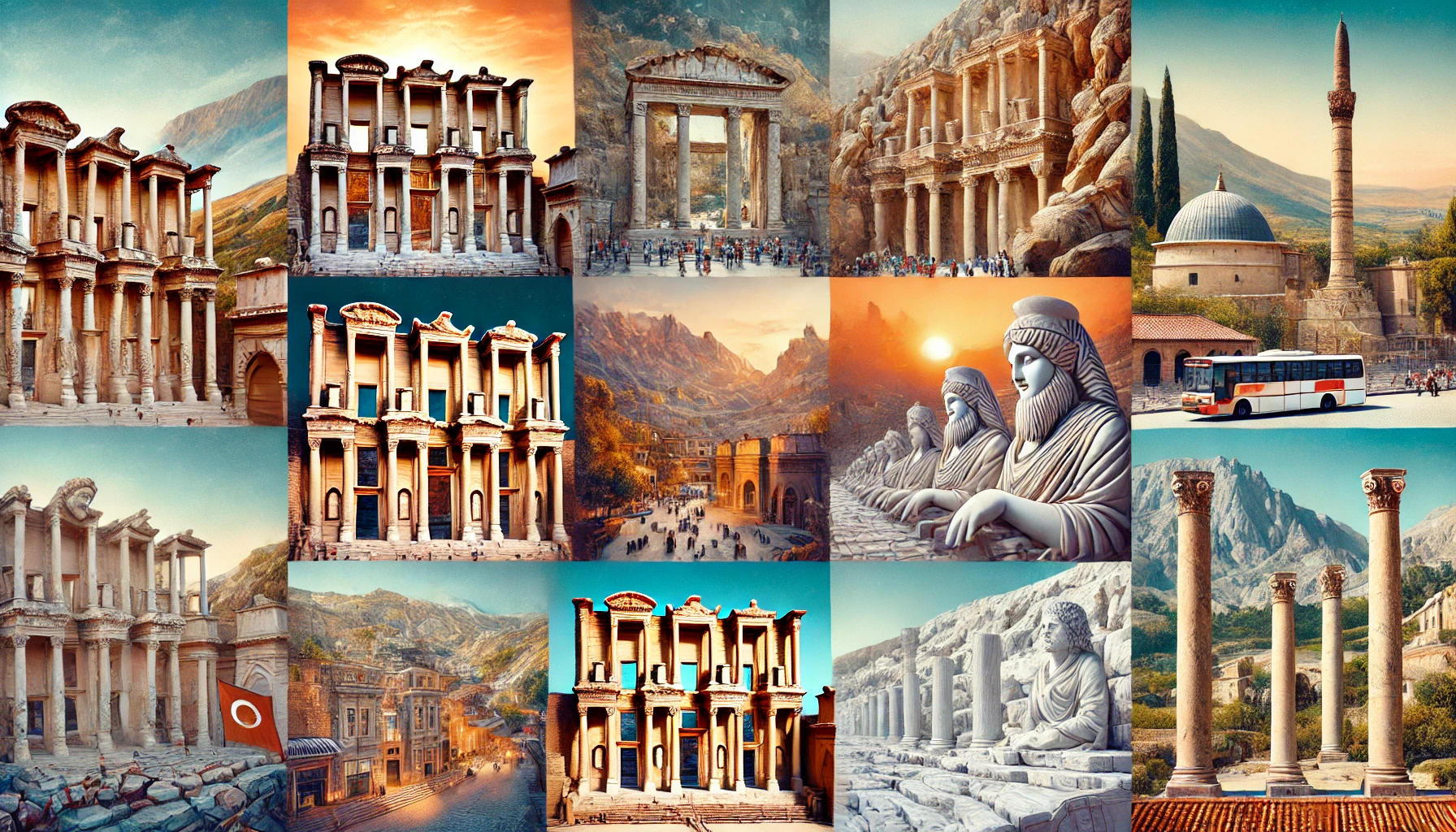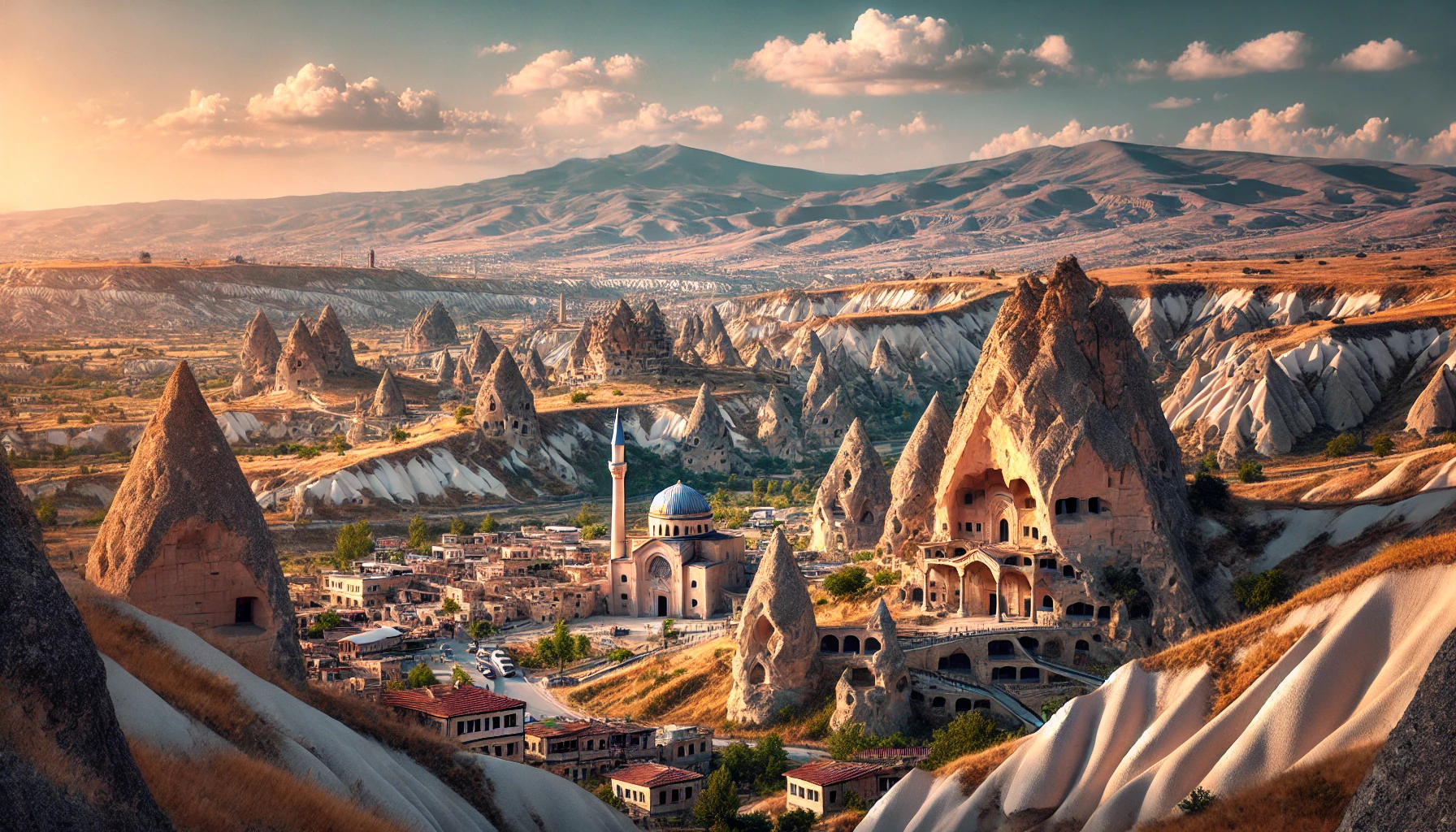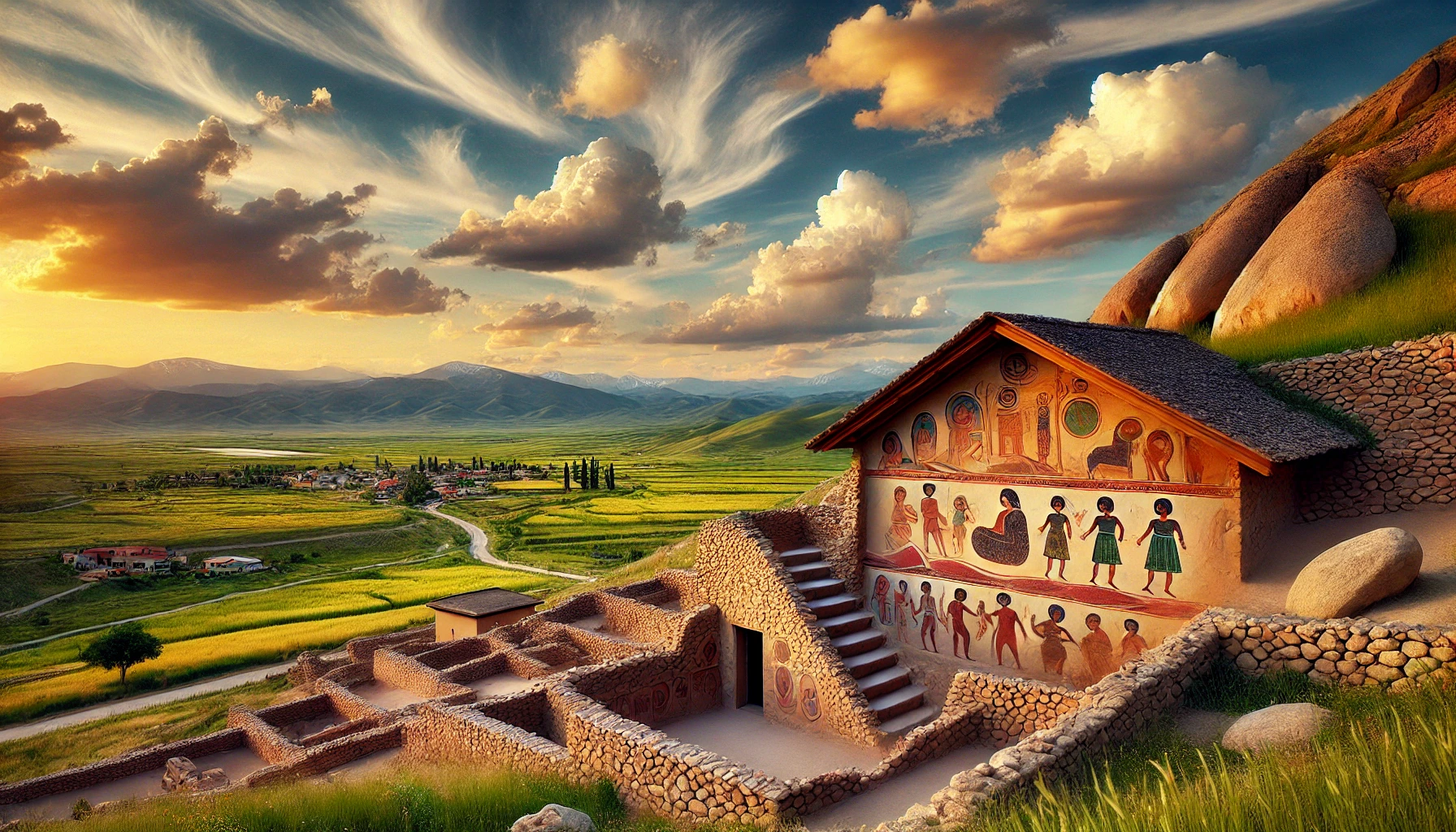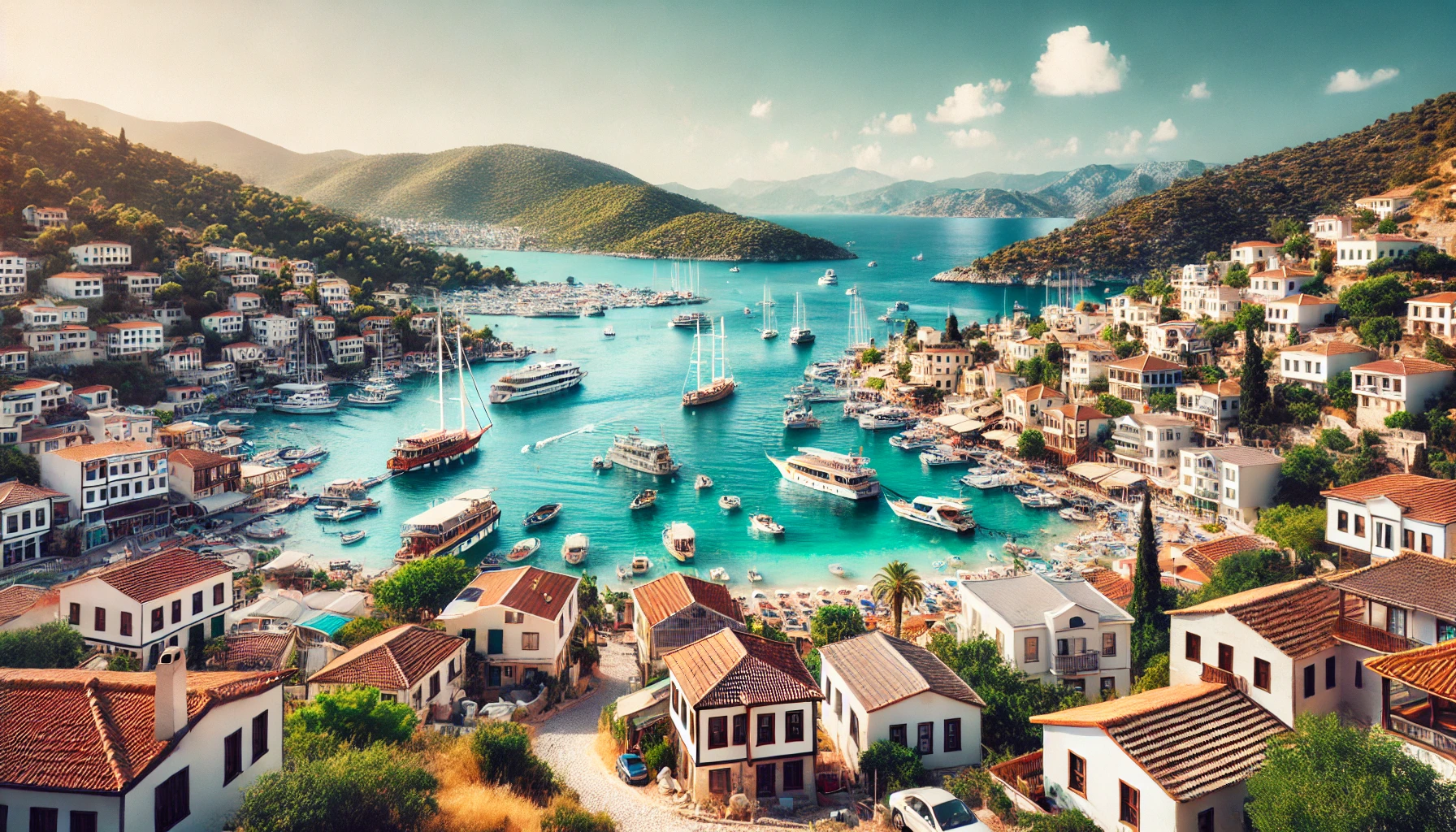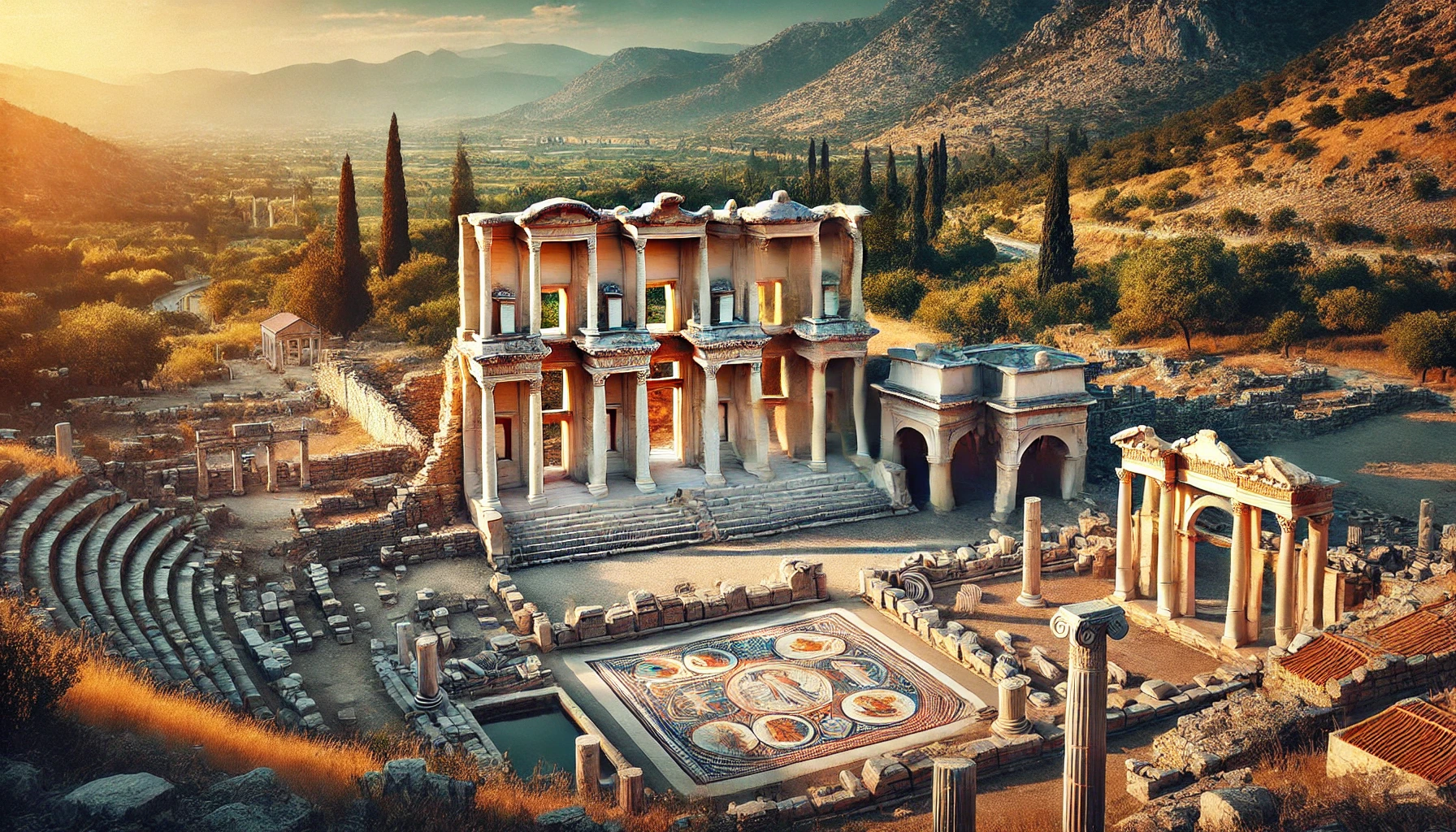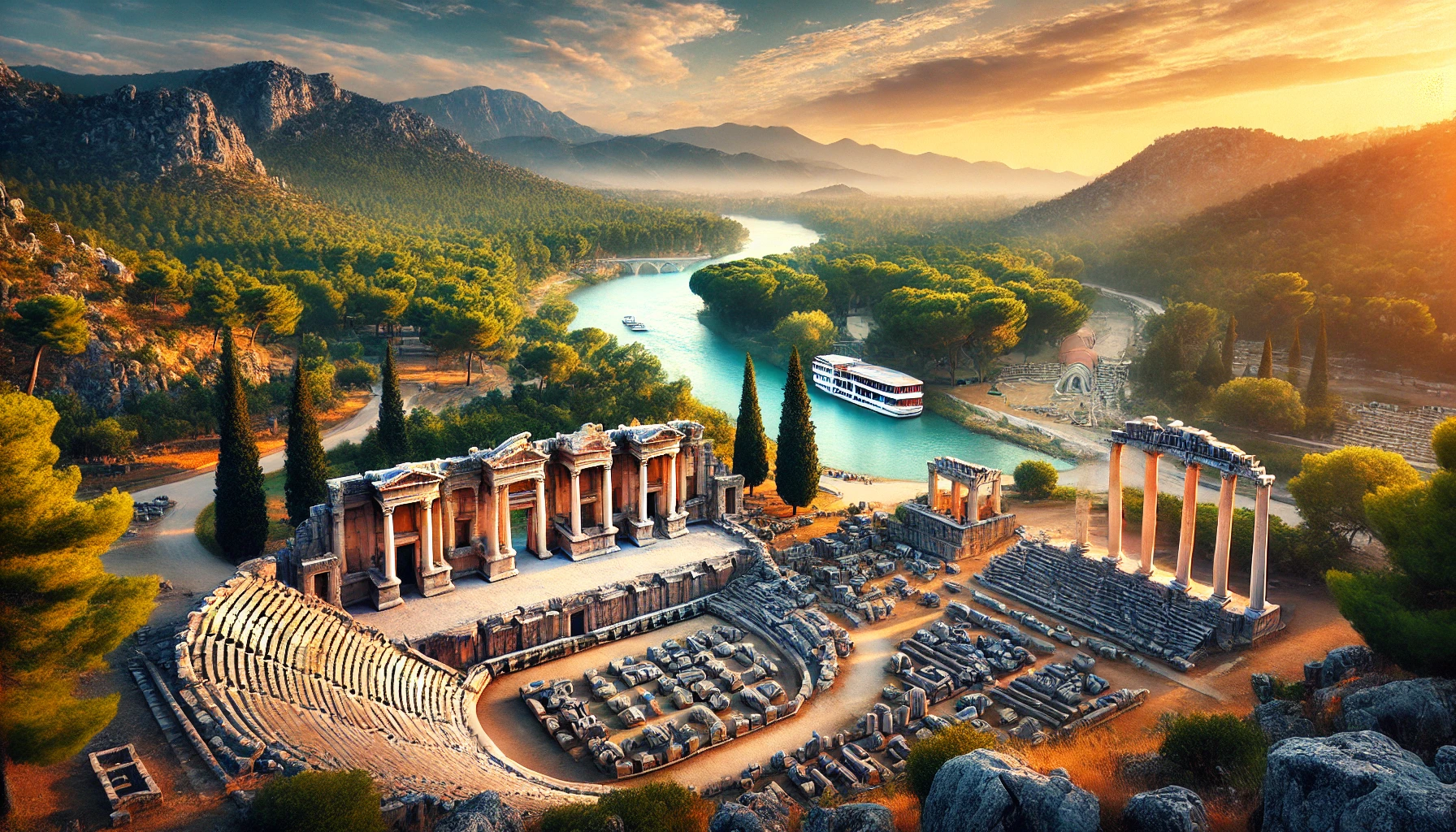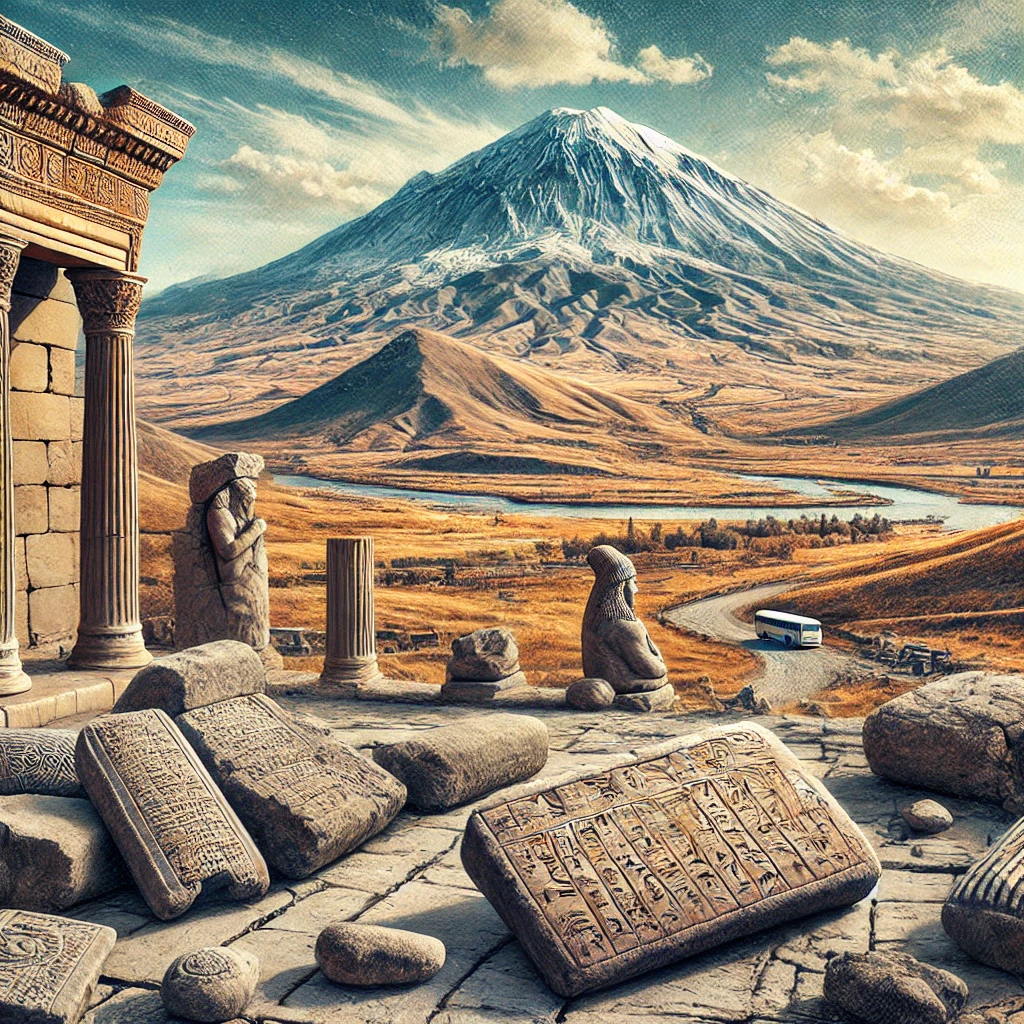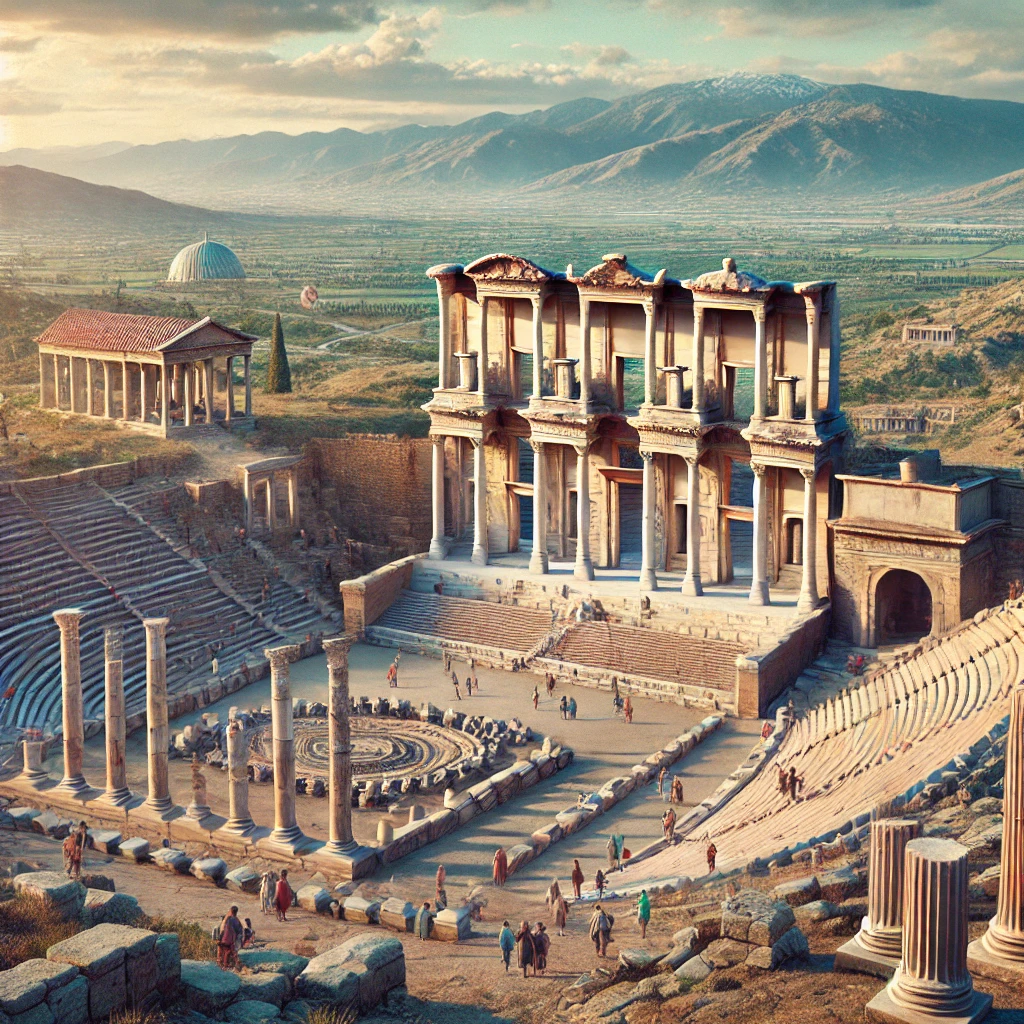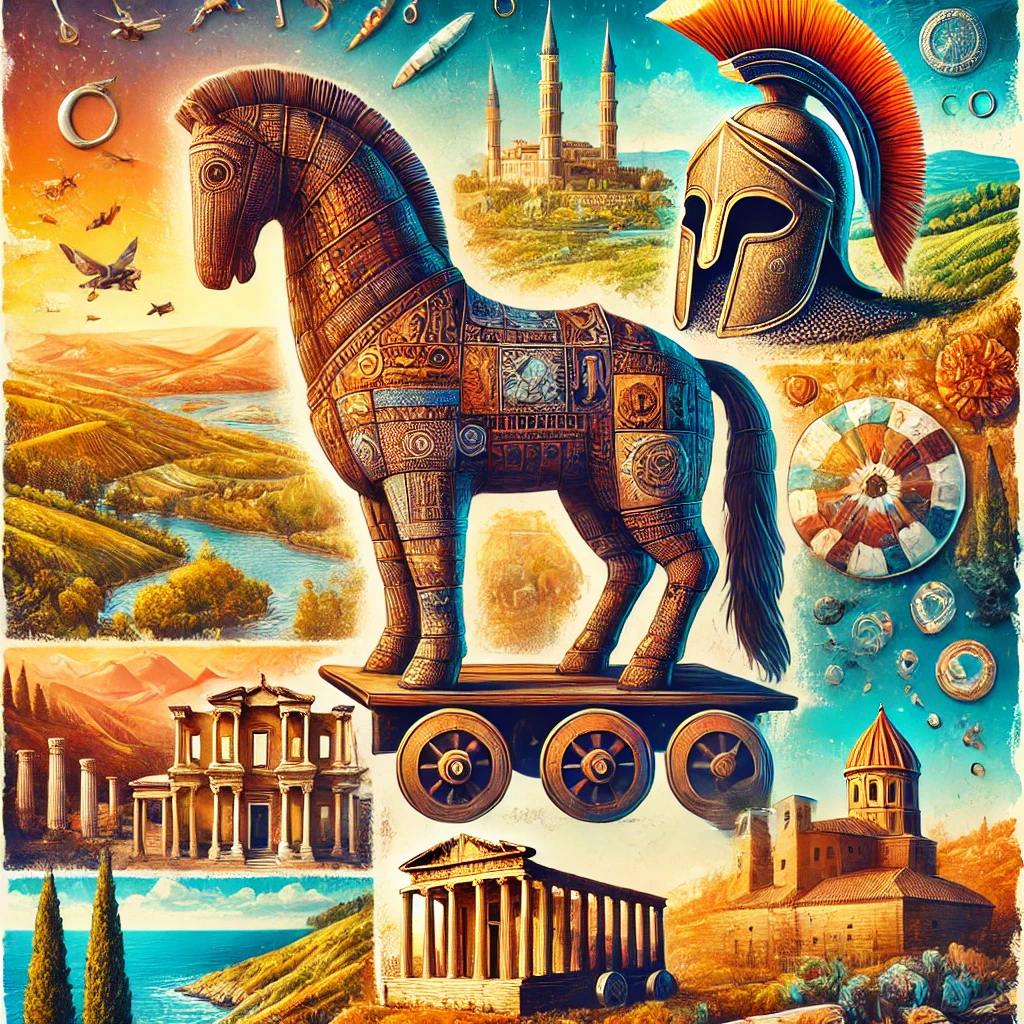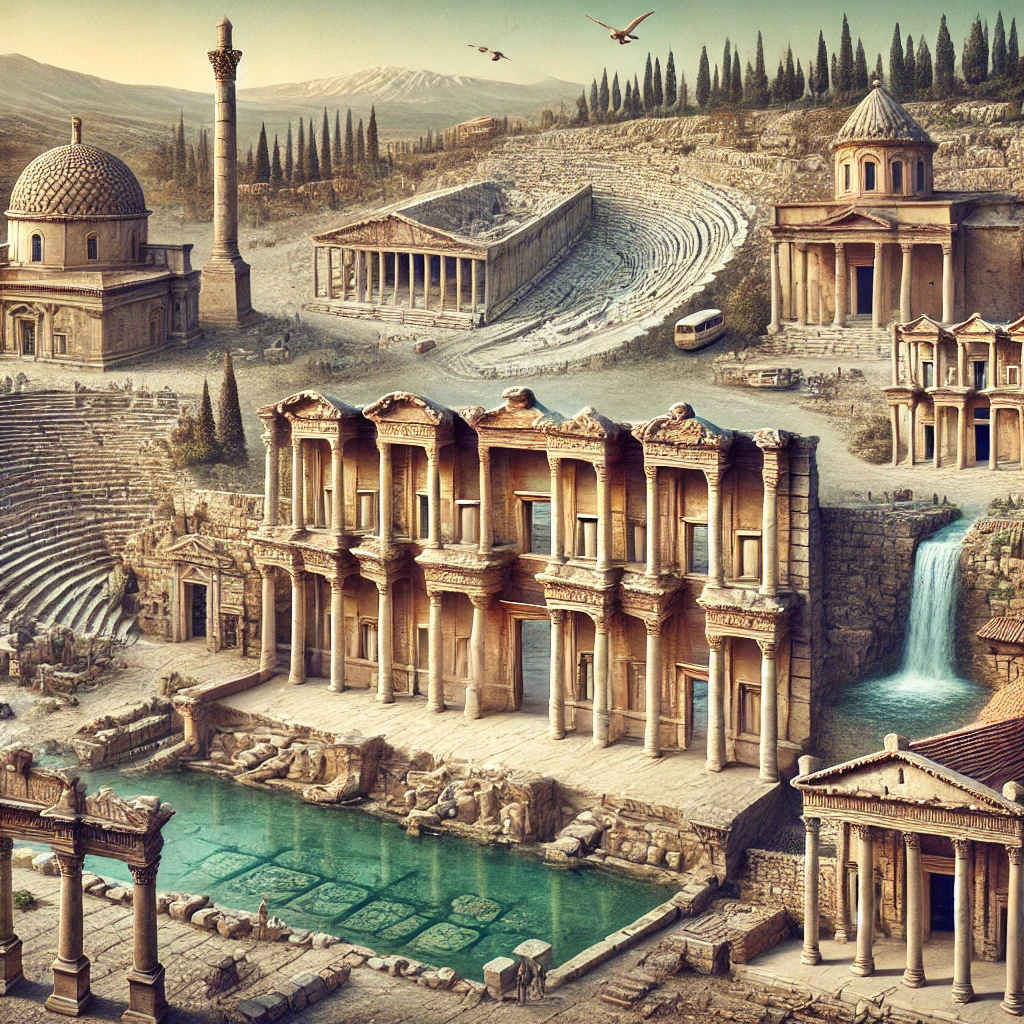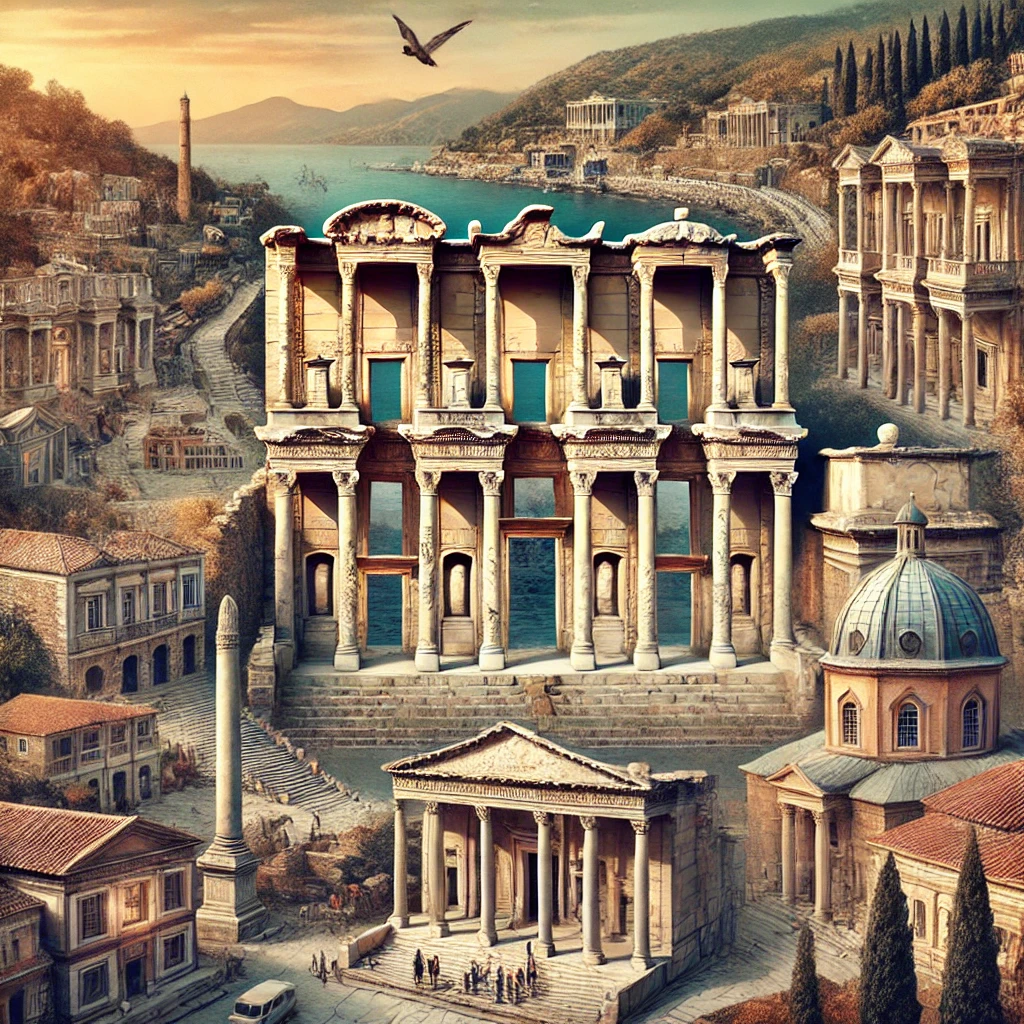Discover Turkey’s UNESCO World Heritage Sites: A Cultural Journey
Turkey, a land where East meets West, is rich in cultural heritage and history. The country boasts an impressive array of UNESCO World Heritage Sites, with 19 cultural and 2 mixed heritage sites. Each site tells a unique story, reflecting the diverse civilizations that have flourished here. Whether you are a history buff, an archaeology enthusiast, or simply a curious traveler, Turkey’s UNESCO sites offer a fascinating glimpse into the past. Let’s embark on a cultural journey to explore these remarkable sites.
Aphrodisias (2017)
The Ancient City of Love
Aphrodisias, named after Aphrodite, the Greek goddess of love, is an ancient city that mesmerizes visitors with its well-preserved ruins. Located in the southwestern region of Turkey, this site is renowned for its stunning marble sculptures and the monumental Temple of Aphrodite. The city flourished during the Hellenistic and Roman periods, and its impressive stadium, agora, and theater are testaments to its historical significance. Visiting Aphrodisias is like stepping back in time, where you can almost hear the echoes of ancient cheers in the stadium and the whispers of prayers in the temple.
Archaeological Site of Ani (2016)
The City of 1001 Churches
Nestled near the border with Armenia, the archaeological site of Ani offers a glimpse into the medieval Armenian kingdom. Known as the “City of 1001 Churches,” Ani was once a bustling metropolis and a hub of commerce and culture. Today, the ruins of its magnificent churches, mosques, and city walls stand as silent witnesses to its glorious past. The site’s remote and rugged location adds to its mystical charm, making it a must-visit for those seeking a unique historical adventure.
Archaeological Site of Troy (1998)
The Legendary City of Homer’s Iliad
The ancient city of Troy, immortalized in Homer’s epic poem, the Iliad, is one of the most legendary archaeological sites in the world. Located in the northwestern part of Turkey, Troy’s extensive ruins span several millennia, offering insights into the Bronze Age and beyond. Visitors can explore the ancient city walls, gates, and remnants of houses and palaces, all while imagining the epic battles and legendary heroes that once roamed this land. Troy is a testament to the enduring power of myth and history intertwined.
Arslantepe Mound (2021)
The Cradle of Civilization
Arslantepe Mound, located near Malatya, is an ancient settlement dating back to the 4th millennium BCE. This site is crucial for understanding the early development of urbanization and state formation in the Near East. The well-preserved mudbrick structures, including a palace complex and temple, reveal the sophisticated administrative and religious practices of early societies. Arslantepe offers a unique opportunity to explore the roots of civilization and the dawn of organized human societies.
Bursa and Cumalıkızık: The Birth of the Ottoman Empire (2014)
The Ottoman Heritage
Bursa, along with the nearby village of Cumalıkızık, holds a special place in Turkish history as the birthplace of the Ottoman Empire. The city is renowned for its historic mosques, bazaars, and thermal baths, reflecting the rich cultural heritage of the early Ottoman period. Cumalıkızık, with its charming cobblestone streets and traditional houses, offers a glimpse into rural Ottoman life. Together, these sites provide a fascinating look into the beginnings of an empire that would shape the course of history.
City of Safranbolu (1994)
The Ottoman Time Capsule
Safranbolu is a living museum of Ottoman architecture and urban planning. This beautifully preserved town, famous for its saffron production, offers a unique experience of stepping back into the 17th century. The timber-framed houses, narrow alleys, and historic inns create an enchanting atmosphere. Safranbolu’s meticulous preservation efforts have ensured that visitors can enjoy an authentic Ottoman experience, complete with traditional crafts and local delicacies.
Diyarbakır Fortress and Hevsel Gardens Cultural Landscape (2015)
The Ancient Heart of Mesopotamia
Diyarbakır, one of the oldest cities in the world, boasts a rich cultural landscape that includes the formidable Diyarbakır Fortress and the lush Hevsel Gardens. The fortress, with its massive black basalt walls, has protected the city for millennia. The Hevsel Gardens, an oasis of greenery along the Tigris River, have been a source of sustenance and beauty since antiquity. Together, these sites reflect the enduring legacy of Mesopotamian civilization and the city’s strategic importance throughout history.
Ephesus (2015)
The Roman Marvel
Ephesus, an ancient Greek city on the coast of Ionia, is one of the most impressive archaeological sites in Turkey. The city’s well-preserved ruins include the majestic Library of Celsus, the grand theater, and the Temple of Artemis, one of the Seven Wonders of the Ancient World. Ephesus was a major center of commerce and culture during the Roman period, and its streets and structures offer a vivid picture of ancient urban life. Walking through Ephesus is like exploring a vast open-air museum, where history comes alive at every turn.
Göbekli Tepe (2018)
The World’s Oldest Temple Complex
Göbekli Tepe, located near Şanlıurfa, is a site of extraordinary archaeological significance. Dated to the 10th millennium BCE, it is considered the world’s oldest temple complex. The site features massive T-shaped stone pillars decorated with intricate carvings of animals and abstract symbols. Göbekli Tepe challenges our understanding of prehistoric societies, suggesting that religious practices may have preceded settled agricultural life. Visiting this site is a journey into the depths of human history and spirituality.
Gordion (2023)
The Phrygian Capital
Gordion, the ancient capital of Phrygia, is best known for the legendary King Midas and the famous Gordion Knot. Located near Ankara, this archaeological site offers a wealth of historical treasures, including the impressive burial mounds of Phrygian kings. The remains of the ancient citadel, residential areas, and monumental structures provide a comprehensive view of Phrygian civilization. Gordion is a place where myth and history intertwine, offering a captivating exploration of ancient Anatolia.
Great Mosque and Hospital of Divriği (1985)
The Architectural Marvel of Anatolia
The Great Mosque and Hospital of Divriği, located in eastern Turkey, is a masterpiece of Islamic architecture. Built in the 13th century, the complex is renowned for its intricate stone carvings and stunning architectural design. The mosque’s portal and the adjoining hospital are adorned with exquisite geometric patterns and floral motifs, showcasing the artistic and cultural achievements of the Seljuk period. This site is a testament to the ingenuity and creativity of medieval Islamic architects.
Hattusha: The Hittite Capital (1986)
The Hittite Heartland
Hattusha, the ancient capital of the Hittite Empire, is a site of immense historical importance. Located in central Turkey, the city’s ruins include impressive fortifications, royal residences, and religious structures. The rock-cut sanctuary of Yazılıkaya, with its reliefs of Hittite deities, offers a fascinating glimpse into Hittite religious practices. Hattusha’s extensive archaeological remains provide invaluable insights into one of the most powerful civilizations of the ancient Near East.
Historic Areas of Istanbul (1985)
The Crossroads of Continents
Istanbul, straddling Europe and Asia, is a city of unparalleled historical and cultural richness. The Historic Areas of Istanbul, including the Hagia Sophia, Topkapi Palace, and the Blue Mosque, reflect the city’s diverse heritage as a capital of the Byzantine and Ottoman Empires. Istanbul’s skyline, dominated by its majestic domes and minarets, tells a story of centuries of artistic and architectural achievements. Exploring the historic areas of Istanbul is a journey through time, where every corner reveals a piece of the city’s illustrious past.
Nemrut Dağ (1987)
The Mountain of Gods
Nemrut Dağ, located in southeastern Turkey, is an awe-inspiring archaeological site. Atop the mountain sits the tomb-sanctuary of King Antiochus I of Commagene, flanked by colossal statues of gods and mythical creatures. The site offers breathtaking panoramic views of the surrounding landscape, and the enigmatic statues add an air of mystery and grandeur. Nemrut Dağ is a place of spiritual and historical significance, where the ancient world’s reverence for the divine is palpable.
Neolithic Site of Çatalhöyük (2012)
The Dawn of Urbanization
Çatalhöyük, located in central Turkey, is one of the most important Neolithic sites in the world. This ancient settlement, dating back to the 7th millennium BCE, provides crucial insights into the early development of human societies. The well-preserved mudbrick houses, wall paintings, and artifacts offer a detailed picture of daily life, social organization, and religious practices in prehistoric times. Çatalhöyük is a key site for understanding the transition from nomadic to settled life and the beginnings of urbanization.
Pergamon and its Multi-Layered Cultural Landscape (2014)
The Hellenistic Wonder
Pergamon, an ancient Greek city in modern-day Bergama, is renowned for its rich cultural and architectural heritage. The city’s acropolis, with its majestic temples, theaters, and libraries, stands as a testament to its Hellenistic glory. The Sanctuary of Asclepius, an ancient medical center, highlights Pergamon’s contributions to science and medicine. The site’s multi-layered cultural landscape, reflecting various historical periods, offers a comprehensive exploration of ancient Greek civilization.
Selimiye Mosque and its Social Complex (2011)
The Ottoman Architectural Masterpiece
The Selimiye Mosque in Edirne is a crowning achievement of Ottoman architecture. Designed by the legendary architect Mimar Sinan, the mosque and its complex, including schools, baths, and markets, exemplify the grandeur and sophistication of the Ottoman era. The mosque’s elegant minarets, spacious courtyard, and intricately decorated interior create a sense of awe and reverence. Selimiye Mosque is not only a place of worship but also a symbol of the cultural and architectural zenith of the Ottoman Empire.
Wooden Hypostyle Mosques of Medieval Anatolia (2023)
The Medieval Wooden Marvels
The Wooden Hypostyle Mosques of Medieval Anatolia represent a unique architectural tradition in Turkish history. These mosques, characterized by their wooden columns and beams, showcase the craftsmanship and ingenuity of medieval Anatolian builders. The intricate woodwork and serene interiors create a peaceful and spiritual atmosphere. These mosques are a testament to the enduring legacy of Islamic architecture in Anatolia and the skill of its artisans.
Xanthos-Letoon (1988)
The Lycian Legacy
Xanthos and Letoon, located in southwestern Turkey, are significant archaeological sites that offer insights into the ancient Lycian civilization. Xanthos, the Lycian capital, features impressive tombs, a theater, and the remains of a grand acropolis. Letoon, the religious center, is home to temples dedicated to the Lycian deities. Together, these sites provide a comprehensive view of Lycian culture, religion, and art. The stunning landscapes and well-preserved ruins make Xanthos-Letoon a captivating destination for history enthusiasts.
Göreme National Park and the Rock Sites of Cappadocia (1985)
The Fairy Tale Landscape
Göreme National Park and the rock sites of Cappadocia offer a surreal and enchanting landscape unlike any other. The region is famous for its unique rock formations, cave dwellings, and ancient churches carved into the soft volcanic rock. The fairy chimneys, as the rock formations are known, create a dreamlike atmosphere, and the underground cities reveal the ingenious solutions of early Christian communities seeking refuge. Cappadocia’s stunning scenery and rich history make it a must-visit destination for travelers.
Hierapolis-Pamukkale (1988)
The Natural and Ancient Marvel
Hierapolis-Pamukkale combines natural beauty and ancient history in a spectacular setting. Pamukkale, meaning “Cotton Castle,” is famous for its white travertine terraces formed by mineral-rich thermal waters. Above these terraces lie the ruins of Hierapolis, an ancient Roman spa city. The well-preserved theater, temples, and necropolis offer a glimpse into the luxurious lifestyle and religious practices of the Romans. The unique combination of natural and man-made wonders makes Hierapolis-Pamukkale an unforgettable destination.
Conclusion
Turkey’s UNESCO World Heritage Sites offer a rich tapestry of cultural and historical experiences. From ancient cities and medieval fortresses to stunning natural landscapes and architectural marvels, each site tells a unique story of human achievement and creativity. Whether you are exploring the legendary city of Troy, marveling at the ancient temples of Göbekli Tepe, or wandering through the historic streets of Istanbul, Turkey’s heritage sites provide an unparalleled journey through time. For travel enthusiasts, these sites are not just destinations but gateways to understanding the diverse and vibrant history of this remarkable country. So pack your bags and set out on an adventure to discover the cultural treasures of Turkey – a land where history lives and breathes.
Sightseeing places near Turkey’s UNESCO World Heritage Sites
Latest Update: Aug 1, 2024
Your Content Goes Here
A brief summary of the key points in this article.

